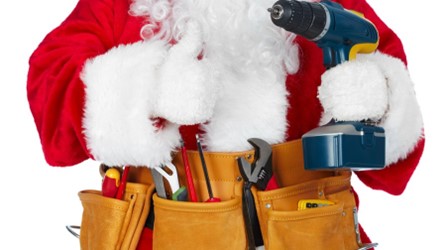Six red flags to look out for to avoid being scammed online when Christmas shopping

“Too good to be true”: Six red flags to look out for to avoid being scammed online when Christmas shopping, according to leading retail expert
With online retail sales predicted to hit over £30 billion over the Christmas period (Source: Statista), online shopping is fertile ground for scammers. How can we, the general public, protect ourselves from these increasingly clever cons?
James Khoury, CEO of leading fulfilment provider, Zendbox, has shared six red flags that shoppers should be on the lookout for when buying online this festive season.
Bad reviews
“The internet is now the best place to find information on virtually anything, making it easier than ever to do some due diligence before you ‘proceed to checkout’. Search for the name of the company or website on a search engine and you will be able to see what people are saying about them. This could be on sites like Trustpilot, or even social media groups, but if there are several reviews and complaints with a similar theme, such as non-delivery or being unable to contact the company, take this as a bad sign and avoid. The same goes when shopping on sites like Amazon. Always read the product reviews to find out if it’s actually any good or just a load of rubbish designed to make you part with your money.”
Too good to be true
“It’s a cliche for a reason. If a deal or price seems way too good to be true, then it most likely is. This is especially true for high value items like mobile phones, tablets or designer goods. Fake and counterfeit goods are worth around $600 billion to those involved in this illegal trade (Source: The Guardian), so it’s no wonder that the average shopper is confused by a very real looking item at a more reasonable price. If the price is considerably lower than in reputable stores, then there’s a very high chance it isn’t genuine. You either won’t get your item once you’ve parted with your money or will get a cheap knock off. Trust your gut and only buy from a well-known store when spending a large amount.”
Domain names and URLs
“Some scammers will set up websites that look identical to legitimate sites and even use a very similar URL. Always check the website address bar. There should always be a padlock symbol and a ‘https’ before the address, and then the genuine website address should follow. For example, ‘https://johnlewis.com’. If the web address was ‘jonlewis.com’, you may not immediately notice any difference, so be sure to double check. You can even run the URL through a site to check if it’s legitimate. Go to the Google Safe Transparency Report page and copy and paste the URL of the website. Google will tell you if it all appears to be above board. Even so, still check the reviews and remember if it’s too good to be true, it likely is.”
Payment methods
“There’s a whole host of payment methods available nowadays, from traditional debit card payments to PayPal, Klarna or Apple Pay. If the site you are buying from only allows you to pay by card or, even more suspiciously, by bank transfer then think twice. Sites like PayPal offer extra protection for buyers and virtually every safe website will give you this option. If you do still want to go ahead, then pay with a credit card not a debit card if the item is over £100. Anything over £100 but under £30,000 is subject to a Section 75 claim and so, if the worst does happen, you should be able to get your money back.”
“For added peace of mind, even if you do get redirected to PayPal, check the URL to make sure it is the real PayPal site and not a scam site designed to look exactly like PayPal.”
Follow ups
“Some scammers use follow up techniques to extract money or data from you. This could be in the form of an email or even a message on social media. If you have interacted with a real site and made a purchase, fraudsters can see the details of your order and then send an email or a message with a link. The link will likely ask you to log in to your account and then the scammers can steal your information. Always check the address that the email comes from and never click on any links. Instead, log into your account on the website or call customer services to check if the email is real.”
Delivery
“It can be hard to keep track of all the deliveries you have arriving over Christmas. A recent scam has involved text messages or emails that say the delivery charge has not been fully met and you will need to pay more. There will be a link to click on where you can then enter your details and pay the charge to have your items delivered. This is not real and you should never ever click the link or enter your details. Some even appear to be from Royal Mail. Just delete them. You can use apps like Shop that track all of your parcels so you know exactly where they are. You could even just create a simple spreadsheet to see what is due and when. If you’re unsure, always contact the store where you made the purchase.”






